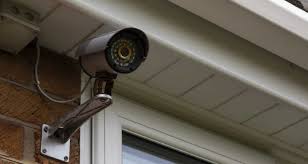Maintaining good air quality in your home is essential for your health, comfort, and overall well-being. Poor indoor air quality can lead to allergies, respiratory issues, fatigue, and even long-term health problems. Fortunately, there are several effective strategies you can use to improve and maintain fresh, clean air inside your home.
1. Ventilation is Key
One of the most important steps is ensuring your home is well-ventilated. Regularly opening windows allows fresh outdoor air to circulate and remove indoor air pollutants such as dust, carbon dioxide, and volatile organic compounds (VOCs). In homes with poor natural airflow, consider using exhaust fans in bathrooms and kitchens or investing in a mechanical ventilation system, such as a heat recovery ventilator (HRV), which brings in fresh air while retaining heat.
2. Use High-Quality Air Filters
Heating and cooling systems should be equipped with good air filters. Look for HEPA (High Efficiency Particulate Air) filters, which can capture very fine particles like pollen, pet dander, and smoke. Change filters every 1 to 3 months, depending on the filter type and how often your system is used. Clean filters keep the air clean and your HVAC system running efficiently.
3. Control Humidity Levels
Humidity plays a crucial role in air quality. High humidity can encourage mold, mildew, and dust mites, while air that is too dry can irritate the respiratory system. Aim to keep your indoor humidity level between 30% and 50%. Use a dehumidifier in damp areas like basements, and a humidifier in winter when air tends to be dry.
4. Reduce Sources of Indoor Pollution
Limit the use of chemical-laden products such as air fresheners, aerosol sprays, and harsh cleaning agents. Opt for natural or fragrance-free products instead. If you paint or use strong chemicals indoors, ventilate thoroughly. Avoid smoking indoors entirely, as tobacco smoke is a major air contaminant.
5. Regular Cleaning
Dust, allergens, and pollutants can accumulate quickly on surfaces. Vacuum carpets and upholstery weekly using a vacuum with a HEPA filter. Mop floors and dust surfaces often to remove particles that can become airborne. Don’t forget to clean blinds, ceiling fans, and air vents regularly.
6. Incorporate Indoor Plants Wisely
Certain houseplants can help filter air naturally. Plants like spider plants, snake plants, and peace lilies can absorb some toxins. However, be cautious if you have allergies or mold sensitivity, as overwatering plants can lead to mold growth.
7. Use Air Purifiers
An air purifier with a HEPA filter can be a great investment, especially in homes with pets or residents with allergies. Place them in high-use areas like bedrooms or living rooms for maximum effectiveness.
8. Test for Radon and Carbon Monoxide
Radon is a naturally occurring gas that can seep into homes and is a known health hazard. Use a radon test kit or hire a professional. Install carbon monoxide detectors to monitor this odorless, dangerous gas, especially near sleeping areas.
By combining these strategies, you can ensure your home remains a healthy, safe, and comfortable space with clean air year-round.
Search
Categories
Recent posts
Tags
- a louer
- affordable apartments Toronto
- affordable housing
- affordable housing solutions Canada
- Air Filters
- air quality
- apartment
- apartment close to public transport
- apartment for rent
- apartment for rent montreal
- apartment for rent Toronto
- apartment insurance
- appartement
- appliances
- ARTICLE
- available for rent
- background check
- bacteria
- best city to live in canada
- best healthcare
- bicycle
- bicycle path
- bike lane
- bike path
- bikes
- bill 16
- burglar
- buy a house
- buying a house
- carbon monoxide detector
- cars
- centris
- city
- cleaning
- cleaning products
- cleaning wood floors
- closet
- closet space
- clothing organizer
- compact rental units
- condo
- condo association laws
- condo fees
- condo for rent
- condo insurance
- construction budget
- construction contractors
- construction cost
- credit check
- decorating room
- digital transaction
- door lock
- doors
- downtown micro apartments
- electricity
- employment verification
- energy consumption
- energy cost
- energy saving
- engineered hardwood
- fire alarm
- fire detector
- fire extinguisher
- floor
- flooring
- for rent
- For rent in Montreal
- For rent in Toronto
- For rent in Vancouver
- for sale
- furniture
- gas
- healthy candles
- healthy lifestyle
- home
- house
- house for rent
- house for sale
- house garden
- house insurance
- house locks
- house plants
- immigrant
- importance of water leak detector
- indoor plants
- insurance
- intergenerational home
- intergenerational living
- interior designer
- investment
- landlord
- lease
- lease responsibility
- long term care facility
- low crime
- mattress
- micro-apartments Vancouver
- micro-units Toronto
- mls
- move to canada
- moving company
- Moving to canada
- moving truck
- multigenerational home
- multiplex
- nano-suites
- nano-suites Toronto
- new apartment
- new color
- oil
- old age home
- online house purchase
- Ontario
- paint colors
- passive income
- pet friendly apartment
- pet friendly plants
- planning for vacation
- plants
- porcelain tile
- property
- questions for apartment rental
- real estate
- real estate agent
- real estate broker
- real estate online
- real estate transaction
- realtor
- renal history
- rent
- rent an apartment
- rent control
- rent obligations
- rental
- rental board
- rental scam
- renting
- residential income
- residential lease
- residential rental
- revenue property
- safe area
- safe candle in apartment
- safe candle in house
- safe candles
- safety
- scam
- security
- sell a house
- seniors residence
- small apartments Vancouver
- smoke detector
- social media and real estate
- soy candle
- soy candles made with essential oils
- storage space
- student apartment
- student housing
- tenant
- tiny rentals Canada
- traffic
- trending color
- trending paint
- university student rental
- ventilation
- vinyl floor
- water alarm
- water damage
- water leak detector
- window frame
- window manufacturer
- windows
- wood floors



